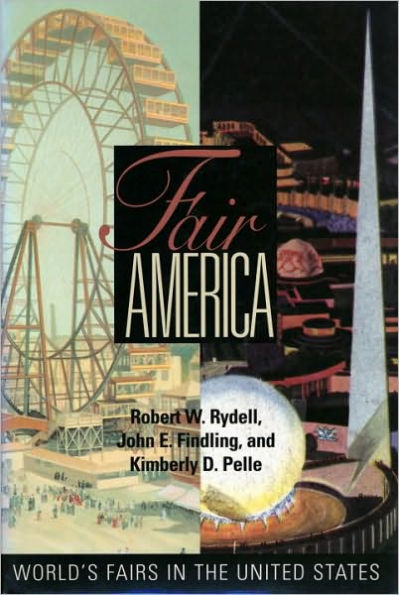
Fair America: World's Fairs in the United States
176
Fair America: World's Fairs in the United States
176Paperback(New Edition)
-
PICK UP IN STORECheck Availability at Nearby Stores
Available within 2 business hours
Related collections and offers
Overview
Setting more than 30 world’s fairs from 1853 to 1984 in their historical context, the authors show that the expositions reflected and influenced not only the ideals but also the cultural tensions of their times. As mainstays rather than mere ornaments of American life, world’s fairs created national support for such issues as the social reunification of North and South after the Civil War, U.S. imperial expansion at the turn of the 20th-century, consumer optimism during the Great Depression, and the essential unity of humankind in a nuclear age.

Product Details
| ISBN-13: | 9781560983842 |
|---|---|
| Publisher: | Smithsonian Institution Press |
| Publication date: | 03/17/2000 |
| Edition description: | New Edition |
| Pages: | 176 |
| Sales rank: | 1,023,379 |
| Product dimensions: | 6.02(w) x 9.04(h) x 0.42(d) |
About the Author
John E. Findling is a professor of history at Indiana University Southeast and the author of Chicago's Great World's Fairs (1994).
Kimberly D. Pelle is an admissions counselor at Indiana University Southeast and coeditor, with John E. Findling, of Historical Dictionary of World's Fairs and Expositions (1990).
Read an Excerpt
The Spokane fair, Expo ‘74, was the inspiration for the Knoxville fair of 1982. Stewart Evans, the executive director of the Downtown Knoxville Association, attended Expo ‘74 and thought Knoxville, a city similar in size to Spokane, could do the same. There was little enthusiasm at first, but gradually, civic leaders, including Jacob F. “Jake” Butcher, president of the United America Bank, came to support the idea as a way to benefit the city and, not so coincidentally, themselves. The city council endorsed the idea of an exposition and moved forward with planning, ignoring requests from a sizeable opposition organization that a public referendum be held with respect to putting on the fair. Meanwhile, Butcher's ties with President Jimmy Carter and, especially, his budget director, Atlanta banker Bert Lance, were useful in obtaining federal support for the fair.
The expo site was a 65-acre plot not far from downtown known as Lower Second Creek, a stream running the length of the city, partly in a tunnel. The proposed site has little public access and a railroad track running through it. Expo planners thought the stream and the rest of the site could be cleaned up and made useful. By the time of the fair, the stream had been buried and a shallow 4-acre pond, called Waters of the World, had been constructed, but the railroad track proved too expensive to move and remained in place throughout the fair. Pedestrian bridges over the track allowed visitors to get from one side of the fairgrounds to the other.
The theme of the exposition, contrived in the context of the energy crisis of the mid-1970s, was Energy Turns the World, and it seemed fitting inasmuch as Knoxville was the home of the Tennessee Valley Authority, a regional energy system built during the 1930s. In addition, Knoxville lies near Oak Ridge, the site of the National Atomic Energy Laboratory, and is not far from the coal deposits in the Cumberland Mountains. Exhibits from 24 nations, 30 corporations, and seven states generally reflected the theme, although it could best be seen in the $21.1 million US pavilion, which included an IMAX film on America's energy resources and numerous exhibits on energy availability and use in the United States. An interactive video system allowed visitors to express their opinions about energy issues, and other video displays informed visitors about different forms of energy production. Most of the international participants hewed to the energy theme as well in their pavilions, although Egypt, Peru, and China all displayed historical relics, and Hungary's exhibit focused on the then popular Rubik's Cube, developed by Hungarian mathematician Erno Rubik.
Table of Contents
| List of Illustrations | vii | |
| Acknowledgments | ix | |
| Introduction | 1 | |
| 1 | Fairs in the Age of Industrialism's Advance | 14 |
| 2 | Fairs of the Imperial Era | 45 |
| 3 | Fairs Between the World Wars | 72 |
| 4 | Fairs in the Atomic Age | 100 |
| Conclusion: Cultural Dinosaurs? World's Fairs and the Survival of the Species | 131 | |
| Notes | 141 | |
| Suggestions for Further Reading | 153 | |
| Index | 163 |
